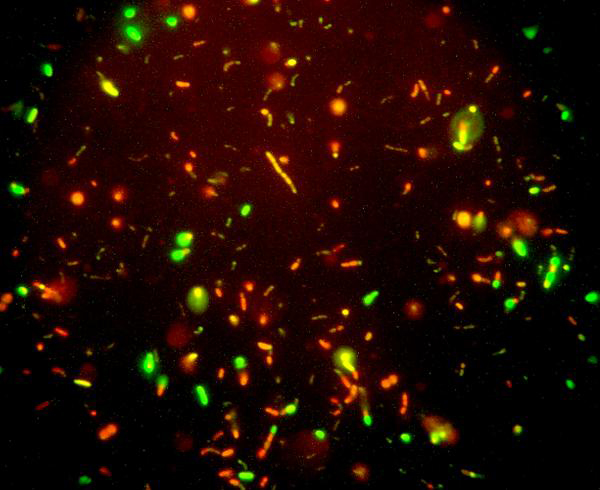Creatures Frozen for 32,000 Years Still Alive

A new type of organism discovered in an Arctic tunnel came to life in the lab after being frozen for 32,000 years.
The deep-freeze bacteria could point to new methods of cryogenics, and they are the sort of biology scientists say might exist on Mars and other planets and moons.
"The existence of microorganisms in these harsh environments suggests — but does not promise — that we might one day discover similar life forms in the glaciers or permafrost of Mars or in the ice crust and oceans of Jupiter's moon Europa," said Richard Hoover, an astrobiologist at NASA's Marshall Space Flight Center.
Other microbes have been discovered in similar frigid environments, sometimes clinging to pockets of liquid water in ice packs. And some microbes survive in ice as spores, but they need to be cultured to bring them to life.
NASA described the newfound critter as "the first fully described, validated species ever found alive in ancient ice."
"They immediately started swimming when the ice melted," Hoover told Live Science, adding that the cryopreserved bacteria were instantly ready to eat and multiply.
Cousins on Mars?
The announcement of the discovery Wednesday comes just a day after a team of European researchers said they found blocks of ice just under the surface of Mars near the equator. The Europeans said the ice, between 2 million and 5 million years old, could serve as storehouses for life.
Get the world’s most fascinating discoveries delivered straight to your inbox.
Hoover said the creatures he has found might be able to survive in their suspended state for millions of years. The discovery opens up a whole new possibility that a future mission to Mars might be able to retrieve any life that's there.
"Ice samples from this [Martian ice] sea could contain cryopreserved microorganisms if life ever flourished on the surface of Mars," Hoover said in a telephone interview. He is particularly excited about the instant revival qualities of the creatures found in Alaska.
"You might actually get them growing in pure culture," he said of the potential Martian cousins. It would be a "wonderful way of retrieving intact, viable Martian organisms, if they are there."
Water does not guarantee life, but it is a crucial ingredient.
Hoover said the Martian ice blocks are so near the surface that they might partly melt in summer, creating underground pools of water that would allow any microorganisms to grow and reproduce. (Life above ground is considered unlikely due to Mars' dry surface conditions and intense radiation.)
Long process
The discovery process goes back to 1999, when Hoover and a colleague started a search for extremophiles in a tunnel north of Fairbanks, Alaska. The tunnel was dug by the Army Corps of Engineers in the mid-1960s to help scientists study permafrost prior to construction of the Trans-Alaska Oil Pipeline.
Hoover went in search of one type of creature, but also found bacterial cells that surprisingly came to life as soon as the ice thawed. The bacteria thrive on sugars and proteins in total absence of oxygen.
"Life is far more diverse, and far more resistant to conditions we consider hostile, than was thought possible only a decade or two ago," Hoover said. "Studying these organisms helps us understand that life may be far more widespread in the cosmos than we previously imagined."
The bacteria, called Carnobacterium pleistocenium, might also be interesting to medical researchers.
"The enzymes and proteins it possesses, which give it the ability to spring to life after such long periods of dormancy, might hold the key to long-term, cryogenic -- or very low temperature -- storage of living cells, tissues and perhaps even complex life forms," Hoover said.
Microbiologist Elena Pikuta of the University of Alabama in Huntsville contributed to the research.
Robert is an independent health and science journalist and writer based in Phoenix, Arizona. He is a former editor-in-chief of Live Science with over 20 years of experience as a reporter and editor. He has worked on websites such as Space.com and Tom's Guide, and is a contributor on Medium, covering how we age and how to optimize the mind and body through time. He has a journalism degree from Humboldt State University in California.



